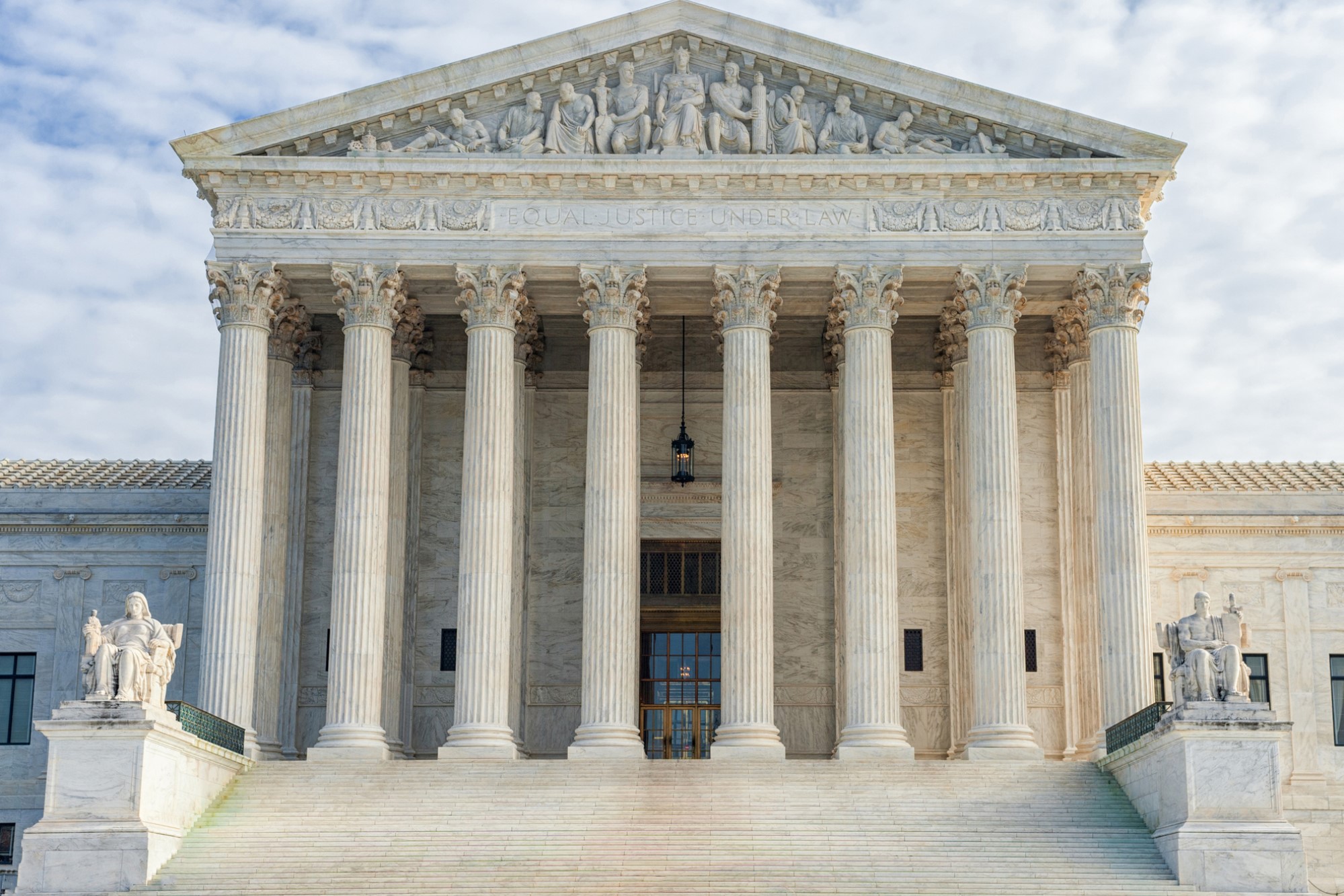‘Til Death Do Us Part?: Biden on Supreme Court Term Limits

On Monday, June 29th an opinion piece authored by President Joe Biden ran in The Washington Post. In it, Biden argues for three reforms relevant to the Supreme Court. He endorses amending the Constitution to specify that former presidents are criminally liable for acts performed while in office (a direct repudiation of Trump v. United States and the idea of presidential immunity), introducing a term limit of 18 years and a binding code of ethics for justices. He later repeated his endorsements of these reforms, and the arguments for them, in a speech at the Lyndon Johnson Presidential Library. The calls for reform follow declining public confidence in the Court. Currently, 57% of Americans disapprove of the Supreme Court and view justices as motivated by ideology, judging cases based on their preferred outcomes, rather than “call[ing] balls and strikes,” as Chief Justice John Roberts famously described their duty.
Provided public opinion is not wholly baseless, this suggests that the Court needs some reform. But something does not mean anything. So, we ought to carefully consider the arguments behind Biden’s proposed reforms. In particular, I want to consider the arguments, both for and against, term limits for Supreme Court justices. This column considers the arguments put forward by Biden. A subsequent piece will consider historical arguments used to justify lifetime appointments for Supreme Court justices.
Why focus only on term limits? It strikes me as the most significant of the three proposals. First, although ending presidential immunity may require a constitutional amendment, this simply reverses a recent, controversial court ruling rather than shaking a pillar of American government. Imposing a mandatory code of ethics for Supreme Court justices merely extends rules that already apply to other federal justices. Creating term limits for justices, on the other hand, upends the conventional understanding of the Constitution – Article III of the Constitution specifies that federal judges “shall hold their offices during good behavior” which means that a justice shall hold an office for life, unless they resign or are impeached. Thus, imposing term limits on justices changes a longstanding element of the federal judiciary. Further, it would be a unique limit for Supreme Court justices as other federal justices serve without term limits. Thus, it is worth considering carefully why Supreme Court justices, and not other federal justices, ought to have their terms limited.
So, what are the arguments for imposing term limits? Biden offers three brief arguments in his op-ed and speech. The first argument compares the judicial branch to the executive branch. Biden notes that presidents have had term limits for 75 years, so he thinks that Supreme Court justices also ought to have their terms limited.
This argument is an analogy – the president of the United States may only serve for a limited number of years, so the same ought to be true of justices. But there are many differences between the president and a Supreme Court justice which may lead one to think only presidents ought to have limited terms. First, as outlined above, the Constitution explicitly grants that federal justices indefinite appointments, while the president’s term is limited to four years (although the Constitution does not discuss re-election, and the two term “limit” was merely a precedent until the ratification of the 22nd Amendment in 1951). Second, the President has far greater power than any justice. There is only one current president while there are (normally) nine justices. The president can command the military, reshape federal policy via cabinet appointments, veto legislation, and issue executive orders, among other powers. Meanwhile, the Supreme Court simply has the power of judicial review. Thus, one might argue that presidents, individuals with great power, need term limits, while Supreme Court justices, being one member of nine with lesser power, do not. So, it is not clear that presidential term limits obviously imply Supreme Court justices ought to have term limits. This is especially true given that Biden has not called for limiting the terms of any other federal offices.
Second, Biden notes that the United States is the only “major constitutional democracy” where members of its highest federal court are appointed indefinitely. Perhaps more developed version of this argument that explains how and why other nations came to limit the terms of their judiciary may be persuasive. But this argument, as presented, seems like an appeal to the masses, a common informal fallacy. Thus, we will move on from it.
Finally, in making his third argument, Biden endorses having justices serve 18-year terms, initiated on a rolling basis, such that the president nominates a new justice every 2 years. He does not lay out how we would transition to this system, but perhaps it is just a matter of logistics.
Biden notes that the appeal of this system is that no single president, or no single term, would have an outsized influence on the court’s composition. In recent decades, there has been little correlation between a presidency’s length and the number of justices appointed. Biden nominated one justice during his four-year term and presumably will not have the opportunity to nominate another before leaving office in January 2025. However, Donald Trump nominated three justices during a single term. For comparison, during each of their eight years as president, Barack Obama nominated three justices, George W. Bush four, and Bill Clinton two. Granted, two of Trump’s appointments were the result of political maneuvering in the Senate. But Biden’s proposed system limits the effects of both chance and political gamesmanship.
But why precisely is it desirable that each president gets to appoint the same or a similar number of justices? We should make this clear. Perhaps the most compelling defense is that the composition of the Court should reflect, or at least move closer to, the current will of the people. Currently, one third of the justices on the court were nominated by a president who lost the popular vote, served one term in office and then failed to secure re-election. Insofar as our institutions are at least indirectly democratic, then they ought to be more reflective of voter preference than the Supreme Court currently seems to be, at least on this argument. After all, democratic institutions derive their authority from the consent of the governed. So, it seems desirable that each president has similar shaping power over the Court.
This argument is more compelling than those offered previously. However, there is something troublesome about it. On an idealistic understanding, justices of the Supreme Court are, or ought to be, experienced, supremely knowledgeable about the law, and able to impartially apply that knowledge when arguing for their specific interpretation of the law. If this is how the Court ought to function, then it is not wholly clear why each president ought to appoint the name number of justices; unless some presidents are incompetent or nominating justices in bad faith, surely, they are selecting individuals they believe are experts in law capable of at least approximating impartiality in the highest court. So, ideally, there is a sense in which who appointed a justice should not matter. An impartial expert is, after all, an impartial expert.
Yet the public will often view justices very differently. Few outside the legal profession read majority opinions, concurrences, and dissents to assess the justices’ reasoning. We cannot blame the average voter for this – Supreme Court decisions are long, complex documents involving numerous arguments that invoke arcane prior law to analyze the current case. Nonetheless, the American public, and presidential candidates as well, often evaluate the quality of justices based on their rulings, and express a desire for justices that will reach specific conclusions. Very few seek, or grade, justices according to the quality of their deliberations.
So, if members of the public judge justices based on their verdicts, and the composition of the Court should reflect the people’s will, regular appointments seem desirable because they will result in rulings that voters will find agreeable. The Court should be made to reflect what voters want, not necessarily the soundest legal reasoning.
However, viewing the court and its justices in this light is ultimately ideological. Implementing term limits for the sake of ensuring each presidential term has similar power over the Court, in effect, labels the institution as a political one. What is sought is factional balance.
Perhaps the Court has been political throughout its entire history. But accepting this requires adopting a very different conception of the justices. To reuse Roberts’ metaphor, viewing the Court in this way means the justices are not just umpires, calling balls and strikes. Instead, the justices are like you and me. They are partisans rooting for a particular team. Or at least put in place because they tend to favor one team. They just happen to have a more detailed understanding of the rules. And they can use that understanding to argue that, based on games of rounders in the 18th century, the pitch which went right down the middle was actually a ball, not a strike.
Even the Court is currently political, we have reason to desire a high court that maintains political neutrality and focuses strictly on what law implies. Thus, despite the relative strength of this argument for term limits, perhaps we ought to hesitate to endorse it. We should consider how the Court ought to function before we embrace the idea that it is just another tool to achieve political goals.
Ultimately, though, we consider the practicality of implementing Supreme Court term limits. As noted earlier, Article III of the Constitution as establishes lifetime appointments for federal justices. Thus, implementing term limits requires an amendment to the Constitutions, lest it be struck down as unconstitutional (albeit, by justices with an interest in striking it down). Amending the Constitution requires a two-thirds majority in both the House and the Senate, or two-thirds of state legislatures calling for a Constitutional convention. After both chambers of Congress then agree on a joint resolution detailing the proposed amendment, three quarters of the states must then ratify it before it becomes an actual amendment. This process is cumbersome, time-consuming, and very unlikely to succeed quickly, especially given that some already claim Biden’s reforms are simply aimed at removing conservative justices. Thus, the proposals seem more like a wish list, to put it optimistically, or merely an attempt to make the public’s discontent with the Supreme Court a focal point of the news cycle and upcoming election, to put it cynically.




